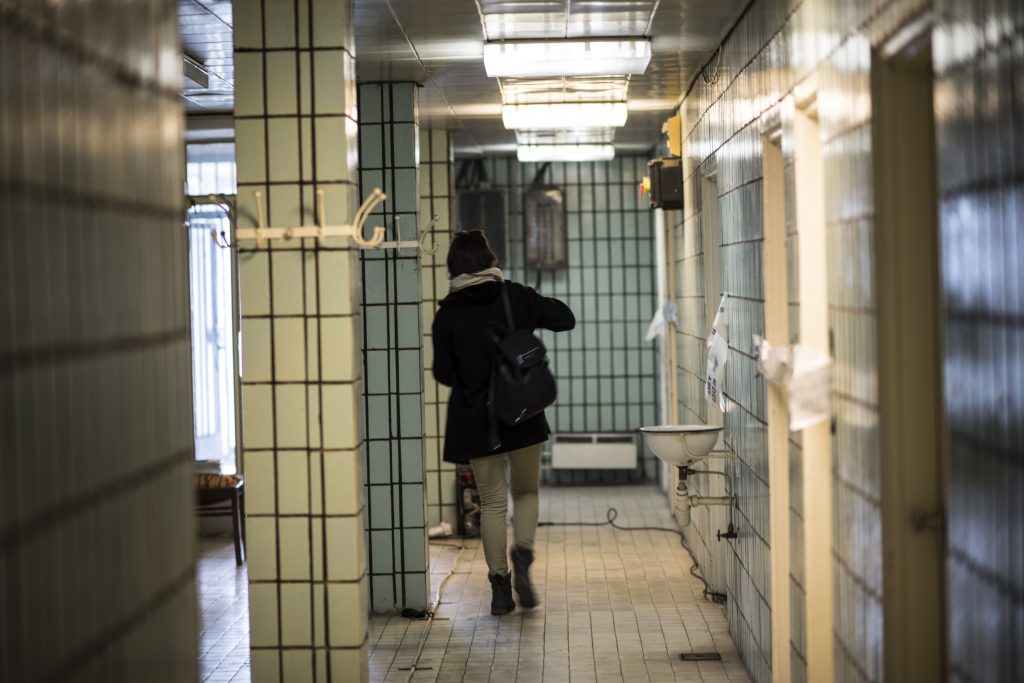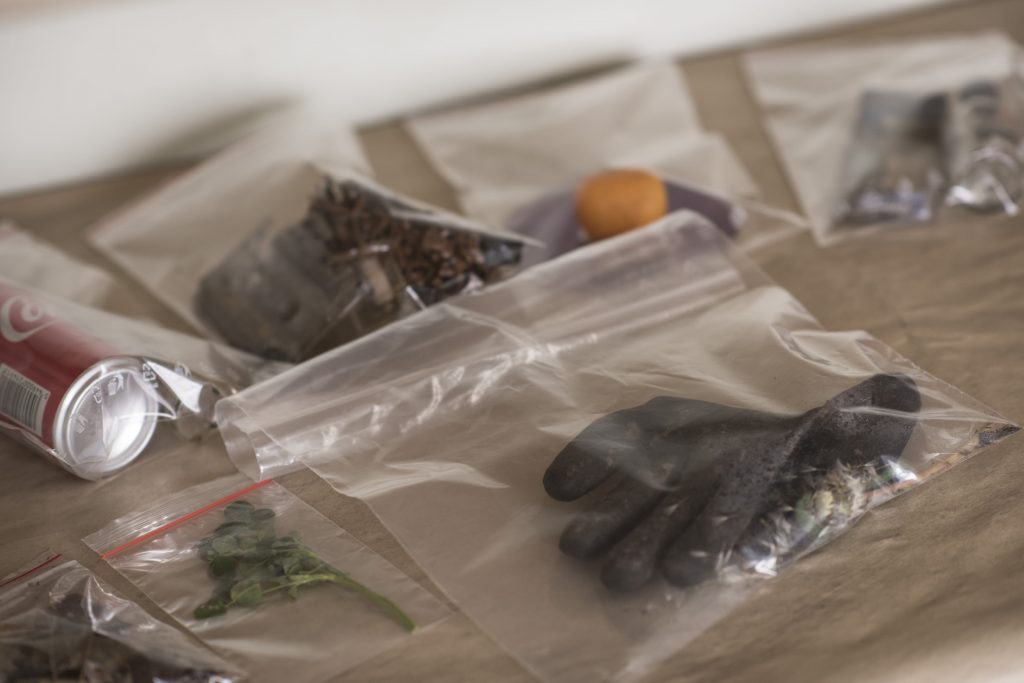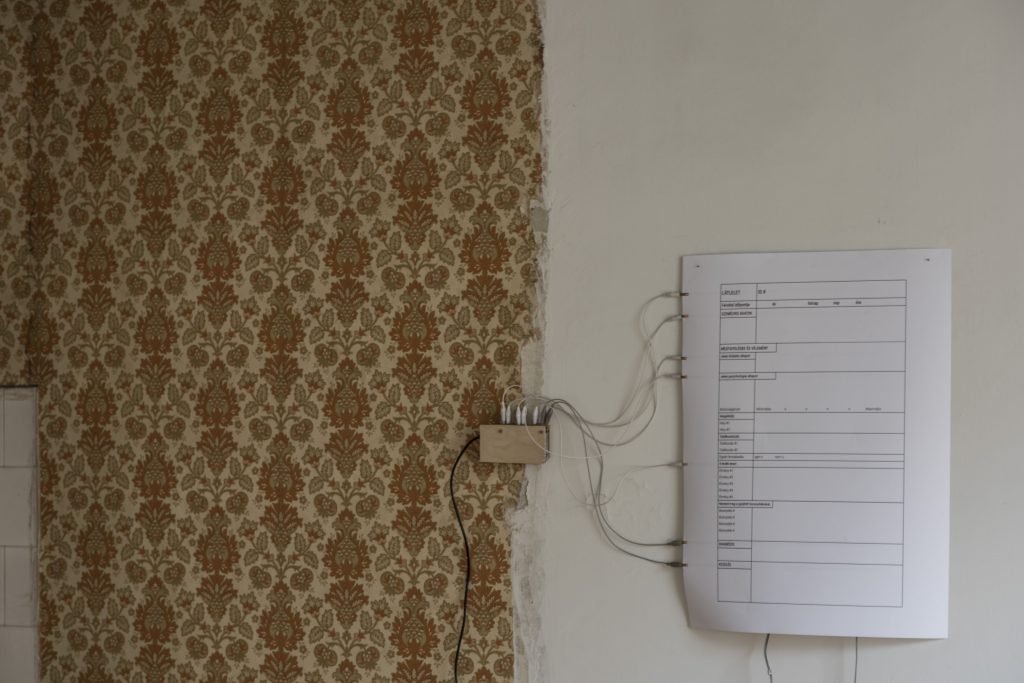The starting point, or why I am not doing much work in white cube settings
Throughout the various project phases, I have been asked several times about my initial motivations and the reason why I actually applied for the PICTURE Budapest – Østfold project. I tried to think of different ways of explaining, but came to the conclusion that there was no reason for doing so.
I am not a black-and-white type of thinker, but there is one certain reason why I am not doing much work in white cube settings. Namely the fact, that contact with users and their natural environments is crucial for my work. Exploring ongoing dynamics and evoking necessary changes in these settings are most definitely some of the main focuses of my professional interest.
Apart from making these evocations relevant to current socio-cultural issues and shaping them to them, I wish to take a look ahead and attempt work towards discoveries of possibilities and potentials for appropriate future scenarios. Doing futurescaping in such a way so that the process and its methods do not become alienated from the artistic practice itself.
Process: the what? the why? and the how?
During the workshops in Moss and Csepel, I have been performing mapping, sampling and testing of experiences in order to gain familiarity with the socially relevant issues affecting the local community, the identity of the place, the everyday life of the local users and their personal narratives, and how all of these findings relate to what is otherwise found on site. Physically, and as part of a larger mental landscape as well. When doing so, I also turned my attention to finding routes towards what are most likely unexpected, but meaningful, future experiences in the forms of short and long-term artistic and designerly interventions and transformations.
Why “experiences”? The word, in and of itself, might lead to a series of thoughts. Here experience is understood partly as a general experience of everyday life that urban planning has had an influence on. But also as more temporary experiences that are facilitated by artistic activity. Some large companies working with designerly and artistic services had for many years retained taglines such as “We design human experiences, not just products”. Exploiting the thinking behind this and taking it “to the next level”, I have been exploring the possibilities of various participatory, artistic and designerly approaches towards current experiences and future utopias.
Places of interest – in both Moss and Csepel – are clearly struggling with an identity crisis, with finding a vision and a mission for their existence. Therefore, my main goals for the two workshops have been framed by the followings: articulating issues of the here and now, and suggesting alternatives for future solutions, or at least planting seeds for such potential processes to start. My leading, albeit hidden, agenda was pre-defined by curiosity. Were these findings pointing to utopias or dystopias? And how might these be applied in order to identify potential future (collaborative) utopias, eventually by turning some of the negativity into an advantage? Even if it only remains positive for the duration and sake of a short-term experience.
I have also been conducting explorations with regard to the question “How might I make the process of planning and decision-making a democratic one so that it is based on user-involvement?” Here it was crucial that the participation of the local users should not only be activated by actual involvement, but the process and its methods should also facilitate the feeling of being involved as well. This is one of the counterpoints found in participatory attempts of both planning processes and artistic services that employ and demand participation from the user-audience.
How to meet these requirements? And also, how to meet my audience?
In order to create an allegory that suits both my artistic and design anthropological research, I started to explore the above-mentioned areas according to the understanding of the dreams, fears and hopes of the users from the local community, as these notions not only correspond to poetic transformations of what is otherwise understood as user needs and desires, they also tell stories about existing gaps.
The methods that I have been using and developing for this explorative research equipped me with valuable data about the users and their environments that otherwise would not be straightforward to obtain. For instance, interviews: while this traditional method works well in certain situations, one still must remember that people often speak about things in a way that is different from how they actually behave. This is only one example of the benefit of experimental methods in getting information from users. In addition, it is also important to provide feelings of cooperative work, common ownership and empathy.
I made anattempt to gather information and observe as much in natural settings as possible, and therefore invited my interviewees to walk with me on the sites that we discussed, whenever this was possible. The act of walking and actually being able to experience first-hand what was said provided new dimensions of information. Talking about the alienating experience of densely built buildings, dark alleys and surveillance cameras can never be the same as actually sensing it through one’s body. Observing from a distance and engagement in users’ natural environment, in a town meeting and chatting with locals in the cafeteria provide different kinds of understanding.
Along with engaging in activities with users, I have also been investigating other areas in order to sample and test those experiences that were mapped out from interviews and observations made on site. Moreover, these samplings and tests were done to find ways of prototyping those experiences that I was already imagining how to facilitate through potential future interventions. These prototyping techniques have been differentiated according to the following categories:
- bodystorming activities (simulating and re-sampling of experiences in-situ, through one’s own body, a method that enables one to build empathy for users in context);
- conceptual experiments for potential and speculative prototypes, mostly for narrative- and sound-based participatory artistic objects and installations;
- technical and material considerations regarding the above mentionedareas;
- rapid prototyping and documenting of some chosen concepts on-site, and during studio work.
Case study “Moss”
During the first workshop in Moss, I mainly engaged in theoretical and conceptual explorations regarding the above. After a series of interviews, on-site visits and related analytical work, I found myself with a huge quantities of data and dots to connect. The results of these explorations were either pointing to a clearly defined utopian or dystopian way of thinking, but were highlights of how certain user groups relate to the identity of a town in transformation, how these changes manifest in their everyday lives. After learning how the current situation is determined by an atmosphere filled with nostalgia, the feeling of failure due to a lost identity and lost industry, and how the feeling of belonging turned into a loss of ownership for most of those that I interviewed, I have been turning my focus in two directions:
Outcome 1) I looked into the ways in which the local urban planning authorities work towards inviting and involving the community to collaborate. I found the need to provide a critical point of view on the applied methods and their execution, and I started to develop a more democratic and playful framework for what I call “collaborative utopian praxis in the style of Moss”.
Outcome 2) In addition to a more general mapping of the subjects’ dreams, hopes and fears, I also have been doing research on some selected sites and have spotted possibilities for short-term artistic interventions. Here, ideas for various audio- and narrative-oriented participatory installations and urban walks, and a theater monologue represent the outcomes of the materializations of my findings.
For one of these ideas, I prepared a small demo that I titled “Leftover Places”, inspired by sites in the Peterson paper factory and an empty residence in Nyquistbyen. Sites that both serve as contradictory domains and metaphors for the ongoing socio-cultural transformations in town, and connected moods and feelings. These were built up along a dystopia-utopia analogy, and I was interested in how I could encapsulate these and facilitate experiences are immersive for visitors, while also being speculative and asking questions about relevant issues.

Case study “Csepel”
In Csepel, although I tried to follow the same agenda, due to the workshop’s production orientation, my research quickly led to its constructive phase. Even though my discoveries underlined my previous assumptions, the road to the final showing was not without bumps. Concepts and prototyping ideas were continuously changing and transforming. This was partly due to some practicalities that needed to be solved, and partly because my mappings started to take on a certain edge that was not exactly aligned with my initial goals and ideas. Therefore, I shifted my focus from a close collaboration with locals to ideas for short-term interventions, some with the potential for permanent display and long-term development. One of these ideas involved an artistic service with an open survey functionality where collaboration with locals and the local cafeteria as a gathering point was the core of the concept. A narrative structure and an interactive sound map would enable the user to be immersed, while also engagin in reflection, in a psycho-geographic walk. While wandering through the alleys of the Csepel industrial area, information from the visitor would be gathered in the forms of directed registering of one’s inner and external experience. The gathered data later would serve as base material for new interventions, or even innovations – as part of potential future work regarding what I would call “collaborative utopian praxis in the style of Csepel”. Why would it not be possible for an interactive social game to take shape, and take place, in one of the social gathering points of the area in question? Developing new participatory methods via the use of playful and non-invasive technology-based platforms for open research has been one of my main focuses.

What did I find instead?
I found myself in a no-man’s land of dissolving dystopias and utopias. In a world where warmth and coolness are present in equal measure. Welcoming attitudes and paranoia about security. Birds singing from green trees on one side of a road, and on the other, the smell of molten metal followed by exhausted faces covered by steel dust. A hell for some, and exotica for others. But for the most, a temporary place.
So, instead of my initial goals and ideas, I made an attempt to provide an evocative, but honest, report of the current state that I found during my research and encounters with the place and its users. I also asked the festival visitors to do their own versions of a Csepel-report, mainly based on their experiences while drifting in this quite special area. The final outcome for display became “Látlelet” [“Findings”], a word that in Hungarian is used in medical reports establishing evidence for a diagnosis.
“Látlelet” is a piece in two parts. Part 1) is a spatial and interactive multimedia installation and association game that is primarily based on findings from my own research on site. On those experiences that I collected and studied myself while doing various (artistic, designerly and anthropological) attempts to closely map the everyday life and the collective and personal stories in the factory area of Csepel. With my work, I intend not only to highlight the issues of the here and now in a poetic, but still a critical, way. It offers a suggestive, but raw and honest report that is informative as well, and states my project goals. Moreover, it expresses my wish for user involvement in such processes. Part 2) is an invitation to submit user-created reports and evidence, where I equip the festival visitors with a simple walking kit consisting of a bag and a “medical report and evidence” form. This form does not look much different from the medical forms familiar to everyone in Hungary, and even though the content is inspired by the traditional form, this questionnaire contains a hidden agenda. Namely, it is directed at such reflections, associations and explanations that are able to reveal and communicate one’s inner and external experiences while walking and developing a familiarity with the area. Participants are encouraged to collect evidential objects or other appropriate proof as part of the experience. The form also asks participants to give a diagnosis and suggestions for treatment, meaning that opinions about the current state and suggestions and wishes for future changes of any kind are welcomed.
At the moment, I have these in my possession – some describing a marvel and a potential wonderland, while others cry their hearts out and show empathy for those who experience it as hell.

Outro & Outcomes
So what? The day after tomorrow there still will be a town of Moss and one of Csepel, with everyday lives ruled by dreams, fears and hopes. Dystopias and utopias. My (and my colleagues’) work here is definitely not done yet, but it highlights those potential areas where such research through art and design might be beneficial not only for temporary experiences (such as the presentations facilitated), but for futurescaping processes as well. Performing actual experiments towards the establishment of a platform for an open research project where user-involvement is a key element might be one step forward. A platform where questions can be asked and answered about what kind of a city and environment we could imagine living in so that it is satisfactory at the level of basic needs, and extended one as well. A platform that, even by inviting speculation and make-believe, enables and invites thoughts regarding socially relevant issues. A platform where participation is not forced, and the tools applied are not invasive or alienating. A platform where it is not only serious matters on the plate, but playfulness and poetics also gain in power.
I am ready to test it to see if it works!